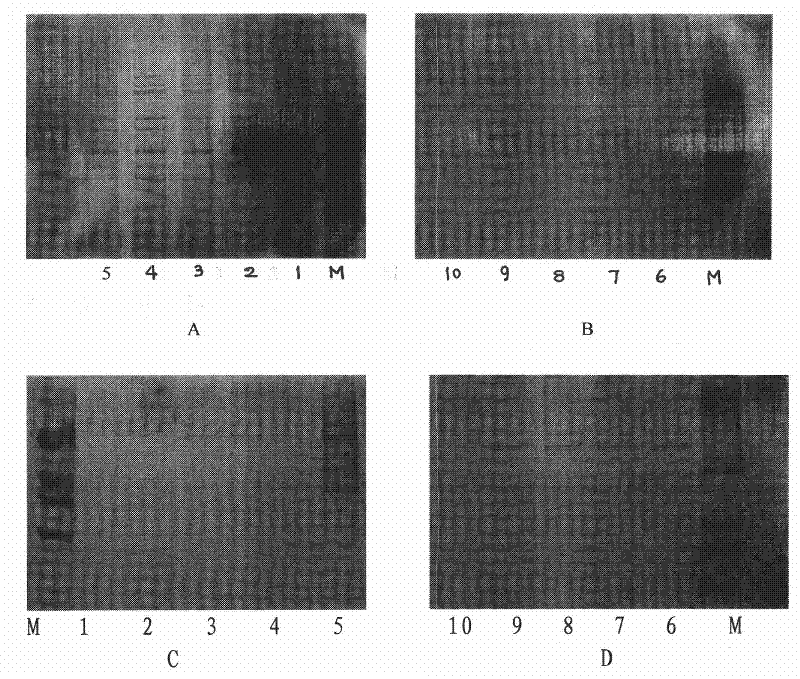Adaptive culture method of rotavirus P(2) G3 strain and P(8) G1 strain on KMB17 cells and immunogenicity
A rotavirus and culture method technology, applied in biochemical equipment and methods, inactivation/attenuation, instruments, etc., can solve the problems of unestablished immunogenicity and low infectivity titer of rotavirus, and achieve good results. The effect of immunogenicity
- Summary
- Abstract
- Description
- Claims
- Application Information
AI Technical Summary
Problems solved by technology
Method used
Image
Examples
Embodiment Construction
[0030] Materials used in the following examples include:
[0031] Monkey rotavirus P[2]G3 strain (18th passage, multiplied on Vero cells),
[0032] Human rotavirus P[8]G1 strain (10th passage, propagated on Vero cells).
[0033] (1) Adaptive culture of rotavirus on KMB17 cells
[0034] Use MEM medium containing 10% newborn bovine serum to culture KMB17 cells in a spinner bottle. After the cells grow into a dense monolayer, inoculate P[2]G3 and P[8]G1 strains of virus at a MOI of 0.05, and observe the pathological changes. When the CPE reaches +++-++++, the virus liquid is harvested. In this way, the virus was serially passaged for 10 passages.
[0035] 20ug / ml of acetylated trypsin and 600ug / ml of CaCl can be used before virus inoculation 2 Activate in a water bath at 37°C for 60 minutes, inoculate the virus and adsorb at 37°C for 90 minutes, discard the unadsorbed virus liquid, and add the MEM maintenance solution with a final concentration of 0.5ug / ml acetylated trypsin ...
PUM
 Login to View More
Login to View More Abstract
Description
Claims
Application Information
 Login to View More
Login to View More - R&D
- Intellectual Property
- Life Sciences
- Materials
- Tech Scout
- Unparalleled Data Quality
- Higher Quality Content
- 60% Fewer Hallucinations
Browse by: Latest US Patents, China's latest patents, Technical Efficacy Thesaurus, Application Domain, Technology Topic, Popular Technical Reports.
© 2025 PatSnap. All rights reserved.Legal|Privacy policy|Modern Slavery Act Transparency Statement|Sitemap|About US| Contact US: help@patsnap.com



